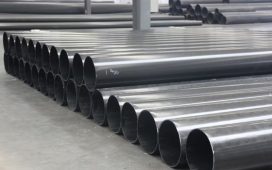T beams and H piles are fundamental in construction, providing critical structural support for projects such as bridges, high-rises, and retaining walls. Their durability directly impacts the safety and longevity of these structures. T Beam and H piles undergo a meticulous manufacturing process designed to ensure they meet the highest standards of strength and reliability.
1. Material Selection
The foundation of a durable T beam or H pile lies in the raw materials.
- High-Strength Steel: Selected for its exceptional tensile strength and resistance to deformation.
- Chemical Composition: Incorporating elements like manganese and carbon for added toughness.
- Rigorous Material Testing: Ensures steel quality meets construction standards for safety and performance.
These materials ensure the beams and piles can withstand extreme forces without compromising their structural integrity.
2. Manufacturing Process
Precision is key in crafting T beams and H piles.
- Hot Rolling: Steel billets are heated to high temperatures and rolled into T or H shapes.
- Shaping and Cutting: Advanced CNC machines ensure precise dimensions for optimal fit and performance.
- Reinforcement Techniques: Beams and piles are often reinforced to handle specific load requirements.
This process guarantees uniformity and strength in every component.
3. Surface Treatments for Longevity
To improve their durability, T beams and H piles undergo protective treatments.
- Galvanization: Coating with zinc prevents rust and extends lifespan.
- Epoxy Coatings: Provide additional resistance to chemicals and moisture.
- Corrosion Protection: Essential for piles used in wet or coastal environments.
These treatments ensure the components perform reliably under harsh conditions.
4. Quality Testing and Certification
Strict quality assurance measures ensure the durability of each product.
- Load Testing: Verifies the load-bearing capacity under simulated conditions.
- Ultrasonic Inspections: Detects internal flaws like cracks or voids.
- Compliance with Standards: Products are certified to meet industry-specific safety regulations.
These tests ensure that every beam and pile can handle the demands of its intended application.
5. Applications in Construction
The durability of T beams and H piles makes them indispensable for:
- Bridge Construction: Providing support for long spans.
- High-Rise Buildings: Ensuring stability under significant vertical loads.
- Retaining Walls: Reinforcing soil and preventing erosion.
Their robust design allows them to endure heavy stress and varying environmental conditions.
Conclusion
The durability of T Beam and H piles is a result of high-quality materials, advanced manufacturing, and rigorous quality testing. These components are crucial in ensuring the safety and longevity of modern construction projects.







